She was described as the most beautiful woman in Hollywood – nay, the World!
She could enthrall audiences simply with her gaze, or by parting her lips just enough to reveal the endless possibilities of sin. Her life had all the markings of a modern-day fairy tale: the story of a princess who made her way through life thanks to her beauty, only to find herself locked in the castle of a warlord.
A captivity from which she would escape to conquer Hollywood. But nobody would suspect that this Austrian-born star had the brains of a world-class inventor.
She was the screen siren who inspired Catwoman and Disney’s Snow White, and who invented the technology that would later enable Wi-Fi and Bluetooth.
This is the story of Hedy Lamarr.
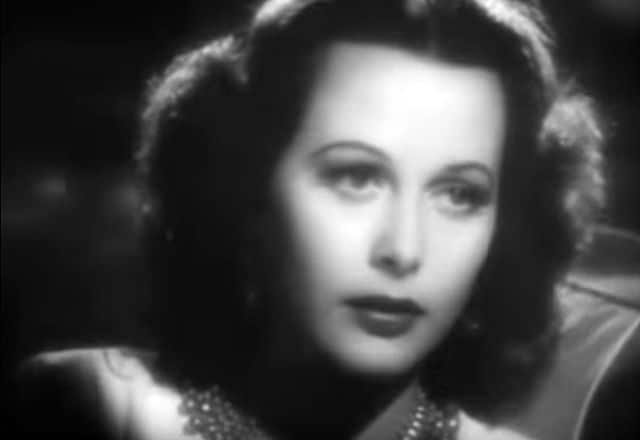
The Most Beautiful Girl in the World
The actress later known as Hedy Lamarr was born Hedwig Kiesler [‘Kiss-ler’] on the 9th of November 1914, in Vienna. She was the only child of Emil and Gertrude ‘Trude’ Kiesler. Both parents were part of the wealthy, assimilated Viennese-Jewish community, and were able to provide Hedwig with the best education.
Trude introduced the young Hedy to classical music, theatre, and the arts in general. She was enrolled into one of the best schools in the Austrian capital, the Doeblinger Middle School, which could boast Anna Freud – daughter of Sigmund – as a teacher.
However, pre-teen Hedy had other concerns beyond the liberal arts.
She had a knack for taking things apart to understand how they worked, and reassembling them again afterwards. A pastime which delighted Emil, who was supportive of her early engineering endeavors.
But most of all, Hedy was conscious of her beauty, of how she would turn heads wherever she went. She also had an unruly spirit, that her parents did their best to keep under control … failing consistently.
For example, one of Hedy’s grandmothers died when she was twelve. As her parents were distracted by the funeral arrangements, the tween seized the moment to enter a beauty contest – which she won!
Around the same time, the Kieslers decided to lock the rebel girl in a Swiss boarding school. Like that would work! Hedy asked a friend to cable the school pretending to be her dad, demanding she return home. The ruse worked, and Hedy slipped back to Vienna to attend yet another pageant.
By her early teenage years, the young Kiesler was back in Vienna, igniting the passion of older boys and dating her first beaus. One of them was a 21-year old actor, Wolf Albach-Retty, later to become the father of another Austrian star, Romy Schneider.
This period is also when Hedwig took her first steps to stardom. First, she signed up for acting classes, then got herself a job as script clerk at Sascha Film Studios, Austria’s largest movie production company. She should have been at school, … but she forged a note in her mother’s name to leave class and attend the interview!
While working there, Hedy learned that a casting call was being held for the minor role of a secretary. So, she stole some makeup from another aspiring actress and gave herself a ‘glow up’. Looking more stunning than ever, Hedy boldly told the assistant director: ‘I want to play the part of the secretary.’
And so it was that she got her first bit role, in ‘Gold on the Street’ released in 1930.
The small part attracted the attention of Max Reinhardt, a director with legendary credentials. This wizard of theatre cast her in the stage comedy ‘The Weaker Sex’, with a part so small it didn’t even have a name. The character was credited only as ‘First American’.
But Reinhardt uttered some magic words to a group of reporters, saying “Hedy Kiesler is the most beautiful girl in the world.”
The quote was picked up by trade papers in October of 1931. The spell had been cast, and the future star received more offers for cinematic work. Hedwig moved to Berlin, where she shot two films in rapid succession: ‘The Trunks of Mr O.F.’ and ‘We Don’t Need Money’.
Hedy played similar characters in both movies: a sweet, unglamorous young woman, who is able to defend herself with powerful slaps should the need arise. Contemporary critics found her acting just competent enough – but obviously everybody agreed on her magnetic beauty.
Hedy had enjoyed relative success in Berlin, but in February 1932, she decided to leave the city. Many fellow Jewish performers had taken the same decision: sensing an imminent rise to power of the Nazi Party, they had moved to Vienna.
Our star, however, had other motivations: she had been hired by Czech director Gustav Machaty to act in the film that would set Europe ablaze with controversy: Ecstasy.
Ecstasy
Photography for Ecstasy began in July 1932, taking place on the Carpathian Mountains.
Hedy played the part of Eva, a young woman married to an older man, Emil, who turns out to be impotent. Eva leaves him and decides to reconnect with nature by swimming nude in a lake. There, she meets the young engineer Adam, and the two fall in love.
Machaty’s intention was to present his heroine as a modern-day Eve, who reconnects with the Garden of Eden, where she meets her Adam. The main character is presented as an independent young woman, who rejects the gilded cage built around her by a decaying husband. In doing so, she becomes a life affirming force, never ceding authority to other male figures – not even to Adam.
Along the way, Machaty and Hedy earned a misleading reputation for pornography. There is, in fact, a nude swimming sequence, and a close-up of Eva’s face during orgasm. All tame by today’s standard, but not in the 1930s.
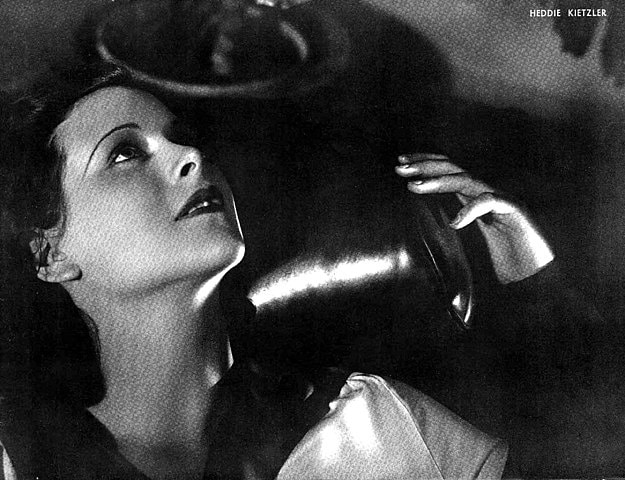
The star was initially fine with those scenes, but when Ecstasy premiered in Vienna in February of 1933, she was dead embarrassed!
Nonetheless, Ecstasy was becoming a wild success, propelled by scandal and controversy.
On one hand, traditional, conservative cinema-goers found this tale of extra-marital sex disturbing and disgusting.
On the other hand, everybody else found the nudity and the orgasm sequence to be too tame! The marketing campaign for the flick promised all sorts of obscenity – and not some kind of art-house film with just one shot of a naked girl! That was the scandal (!).
In any case, all this publicity could only serve Hedy’s goals. She was now the talk of European cinema and another contract soon ensued: in March of 1933, she got the leading role in a stage production about Empress ‘Sissy’- an iconic figure of Austrian culture.
Her performance was greeted with enthusiasm by critics, who, for once, praised her skills instead of just her looks.
If this story is a fairy tale, we could say that this is when our protagonist is recognised as Princess of her realm. But this was also the moment in which the Princess met a dark and shadowy figure, who would become her captor: Fritz Mandl.
The Luxury of Freedom
Fritz Mandl came from a wealthy Hungarian family. He had been born out of wedlock in February of 1900, from a Jewish father and a Catholic mother. The two married only when the boy was 10. An ambitious man, Mandl made it big in the armaments business, earning the nicknames of “Austria’s Munitions King” and “Merchant of Death.”
Fritz was also elegant, charming, and a smooth talker. He nagged mercilessly Hedy and her parents, until the Kieslers consented to an engagement, announced in May, 1933. Hedy converted to Roman Catholicism and the two were married on the 10th of August 1933, soon embarking on a honeymoon across Europe’s most luxurious destinations: Venice, Capri, Nice, Paris.
All along, the young bride had a taste of the riches that this marriage could offer. But she soon realized that those solid gold bracelets weighed more than handcuffs.
As she later put it: “I had every luxury, except freedom”
In fact, Fritz was blinded by a furious jealousy. He demanded that Hedy quit acting and ensured she did not get access to the movie and stage celebrities . It was rumored that he ordered every print of Ecstasy to be bought and destroyed.
This rumor was probably a publicity stunt concocted by the director Machaty, but it captures Mandl character well!
After the honeymoon, the Munitions King locked up his princess in his version of Rapunzel’s tower – Villa Fegenberg, about 160km outside of Vienna. Mandl demanded that Hedy spend all her time at home, organizing his social and business events. He even ensured she was always short on cash to better control her.
A battle of wits soon ensued, as the Princess Bride staged crazy antics to escape Fritz’s control.
On one occasion, she removed all 16 toilet seats from the vast mansion, repainted them in bright colors and set them out to dry on the front lawn … just when Fritz’s business partners were arriving for a meeting!
She then took to escaping from the Villa, going on wild shopping sprees – buying on credit of course! When Fritz saw the extent of the bill, he agreed to give her a fixed allowance.
One day, after escaping to Vienna, Hedy realized that Fritz was following her.
In her own version of events, she evaded capture by sneaking into a notorious peephole show club. But she entered the wrong door, and found herself on stage with the performers. Having no other options, Hedy got into character and improvised a performance with a young male actor.
It is often said that life imitates art. In this case, Hedy’s life seemed to follow the plot of Ecstasy: young wife, older husband, and extramarital passion. One of such flings was inadvertently caused by a friend and client of Mandl’s, a former Italian journalist. You may have heard of him: Benito Mussolini.
Mussilini was happy to buy weapons at premium rates from Mandl. He knew that Fritz would use the extra cash to fund Count Ernst von Starhemberg – one of the topmost ‘Austrofascists’ and leader of the local Heimwehr militia.
Ernst happened to have a charming younger brother, Ferdinand, who caught Hedy’s eye, and the two started an affair.
In the meantime, Mandl was busy supporting the local brand of fascism. While he was opposed to an annexation by German Nazis, Mandl shared much of their ideology, including anti-semitism. In fact, in 1936, the Austrian Association of Cinema Producers declared a ban on hiring Jewish performers. This may have prompted Hedy’s plan to elope with Ferdinand.
On the 13th of November 1936, the two hopped on a train to Budapest, where Hedy planned to resume acting in theatre. But when the train pulled into the station. Hedy was shocked to see Fritz waiting for her: “His face was a gray mask of fury.”
Mrs. Mandl was promptly returned to her gilded cage, but it didn’t take long for the next prison break attempt.
In early 1937, Hedy hired a new maid, Laura. Her credentials? She made for a credible look-alike …
One morning, the runaway bride slipped three sleeping pills into Laura’s coffee. After she fell asleep, Hedy donned her uniform, packed a suitcase, and snuck out from the servants’ door.
Driving Laura’s wreck of a car, Hedy made it to a nearby train station and hopped on a train to freedom.
The experience with Mandl had not been entirely negative. While she was supposed to play the role of the trophy wife at business gatherings, she actually enjoyed discussing technical details with Mandl’s colleagues, especially engineers.
What everybody had overlooked so far is that Miss Kiesler may have frequently skipped school – but when she was in class, she excelled at science.
Her propensity for experimenting and inventing would later pay off in an unexpected way.
A Smouldering Femme Fatale
The Mandls’ marriage was dissolved only years later, when Hedy obtained a divorce in Nevada.
After leaving the States, her first destination was St Moritz, Switzerland, a popular destination amongst Jewish showbiz personalities seeking refuge from Germany and Austria.
While there, the Princess on the run had a brief affair with Erich Maria Remarque, also a persona non grata due to his novel All Quiet on the Western Front. But the two soon parted ways, and Miss Kiesler reached London in the Summer of 1937.
This is where she was introduced to the man who would open the gates of Hollywood for her: co-founder of MGM Louis B. Mayer.
The film tycoon was interested in including her in his new batch of imported European talent. He was also aware of the fame she garnered thanks to Ecstasy, and was quick to admonish her:
“Never get away with that stuff in Hollywood. Never. A woman’s a** is for her husband, not theatregoers”
Mayer also picked a new name for his new acquisition. Kiesler sounded too German, and Mandl had political connotations. From now on she would be known as Hedy Lamarr, after the late silent film star Barbara La Marr.
On October 4th, 1937, the reborn Miss Lamarr signed her first contract with MGM, with a weekly salary of $550, about $10,000 in today’s money.
Despite plenty of attention from gossip columns, Hedy still struggled to find a suitable role: she spoke little English and some camera tests convinced MGM directors that she really could not act!
Until producer Walter Wanger had an insight: with her dark hair, wide eyes and foreign accent, Lamarr was an embodiment of exotic beauty – perfect casting for exotic dramas!
And so she got to star in 1938’s ‘Algiers’ – a role coveted also by Ingrid Bergman. In this drama set in Algiers’ Casbah, Lamarr plays the role of a passionate woman, torn between an older husband and her young lover, a gangster. What a surprise.
A review of the time read: “ … best of all is the smouldering, velvet-voiced, wanton-mouthed femme fatale … black-haired, hazel-eyed Viennese Actress Hedy Lamarr”
Suddenly our heroine had broken into the fantasies of millions of American cinema-goers. Her looks even inspired the character design of Disney’s Snow White – initially drawn to be blonde. Later, she would also inspire the first version of Catwoman!
The success of ‘Algiers’ was followed by ‘Lady of the Tropics’ in 1939. In this romance set in Saigon, Hedy plays a half-caste woman, born to a French father and Indochinese mother. And guess what? She is torn between an older, powerful industrialist lover – and a younger suitor!
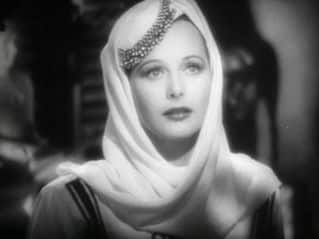
Lamarr in Lady of the Tropics, 1939
Art imitating life again!
Another pattern that emerges is that MGM was typecasting Hedy into stereotypical roles. The trend was confirmed by 1942 ‘White Cargo’. Here, the Austrian beauty plays another exotic seductress, the half-Egyptian, half-Arab Tondelayo.
These films did well enough at the box office, but Lamarr would later regret not sinking her perfectly aligned teeth into meatier roles. For example, in 1940 she had turned down the classic thriller ‘Gaslight’. Even worse, in 1942 she had to decline the part of Ilsa in ‘Casablanca’, for contractual reasons!
The role went to Ingrid Bergman, of course!
Beyond the Silver Screen
During her early Tinseltown years, Hedy Lamarr married – and soon divorced – two Hollywood personalities: first, the producer Gene Markey, with whom she adopted a son, James. Then she married actor John Loder, with whom she had two children, Denise and Anthony.
All the while, she maintained a hobby only few friends – such as Howard Hughes – were aware of: designing inventions. Hughes gifted her portable engineering equipment, so that she could invent away in her trailer between takes. Hedy repaid the favor by streamlining the tycoon’s racing airplane.
Lamarr also invented a tablet that could turn a glass of water into a cola drink. And even an anti-aircraft shell with a proximity fuse!
After the US entered WWII in December of 1941, she wanted to do more for the war effort.
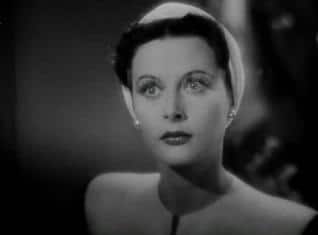
Lamarr in Come Live with Me, 1941
Together with a friend, composer George Antheil, she developed an idea building on ‘frequency hopping’, a concept originally patented by Nikola Tesla in 1903.
Lamarr reasoned that naval torpedoes were given input for depth, speed, and direction, but were left unguided after launch. How about developing a technology to control their trajectories remotely?
Hedy went one step further: how could one prevent the enemy from jamming those directions given via radio signals?
With the help of Antheil, an expert in mechanical pianos, she devised a contraption similar to a piano roll, that would switch between 88 frequencies. Very hard for the enemy to intercept!
This method was patented on August 11, 1942, under the name “Secret Communications System”.
The invention was fully developed by the US military in 1959, as a device to control early drone models. Three years later, during the Cuban Missile Crisis, all US Navy vessels to enforce a blockade on Cuba were equipped with the technology.
And jumping even further ahead, the Lamarr-Antheil Secret Communications System became a fundamental component of wireless communication systems, including wi-fi and Bluetooth. This invention alone was estimated to be worth at least $30 Billion in today’s money.
And yet, Hedy and George never saw one single cent.
The sad truth is that the Navy rejected the invention back in ’42. They understood its theoretical advantages but found it too cumbersome to put in practice. And in later years, Lamarr failed to renew the patent application.
During the War years, the Armed Forces believed that Hedy Lamarr could serve her country of adoption in another way. She bolstered the morale of GI Joes by joining USO events, and more importantly, led a fund-raising effort which sold $25 million worth of war bonds in 10 days!
Hedy’s Last Success
When her contract with MGM expired, she invested heavily in producing her own movies. The noir ‘The Strange Woman’ of 1946 was a moderate success, but ‘Dishonored Lady’ one year later was savaged by censorship and tanked at the box office.
This did not help Hedy’s finances, as she was known for reckless shopping sprees.
The 1940s, though, closed with Hedy’s biggest success to date: the Biblical epic ‘Samson and Delilah’, directed by Cecil B. De Mille and starring Victor Mature as the male lead. Commenting on Mature’s pectorals, Groucho Marx famously quipped: “First picture I’ve ever seen in which the male lead has bigger t*ts than the female.”
As much as we love Groucho Marx and his humor, we expect that Lamarr wished to be remembered for something more than her figure. But such was the life of a Hollywood star, and one on the decline, too. At the age of 35, movie offers started to dry up.
After working with De Mille, Hedy only appeared in six more films, the last being ‘The Female Animal’ in 1958.
Hedy’s declining years were accompanied by trouble and heartache at home.
Throughout the 1950s and 1960s, Hedy got married – and then divorced – three more times.
The wild spending, the box office bombs, and the divorce lawyer bills left the once glamorous star financially ruined. In 1965, she confessed to a fan: “I have no idea where my next meal is coming from, and some days I go hungry.”
In 1966, she had the chance to return to the screen with the horror ‘Picture Mommy Dead’. But she first failed to show up on set, and when she did she collapsed due to exhaustion. In February, she was fired from the production.
The year 1966 was the start of a series of curious appearances in court. Earlier that January, she had been arrested for shoplifting. However, the judge found her innocent and released her.
In the following years she appeared in court again and again, this time as the plaintiff.
First, she sued the ghostwriters who had penned her 1966 autobiography ‘Ecstasy and Me’, and accused them of inventing scandalous details and lurid stories.
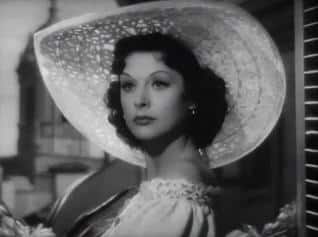
Lamarr in A Lady Without Passport, 1950
Then, in 1974, she dragged to court comedy legend Mel Brooks, guilty of naming a character ‘Hedley Lamarr’ in his ‘Blazing Saddles’. Apparently, Brooks was amused by the attention and agreed to settle out of court.
Next up were the newspapers San Francisco Chronicle and the National Enquirer. The Chronicle had dared publishing the photo of a two-headed goat called Hedy Lamarr, while the latter claimed that the once star had become “a pathetic recluse … old and ugly.”
By the early 1990s, Hedy was living in a small flat in Miami, supporting herself with a Social Security check and a Screen Actors Guild pension. She was arrested again for shoplifting in 1991 – and this time was sentenced to one year of probation.
In April, 1998, Hedy found the energy to file her final lawsuit against software company Corel Corp. Her photo had been used, without permission, on the cover of CorelDRAW.
The Tragedy of Beauty
Hedwig Kiesler, better known as Hedy Lamarr died on the 19th of January 2000, in Casselberry, Florida.
Up to the very end, she kept coming up with new inventions: a fluorescent dog collar, a new type of traffic light, and even improvements for the Concorde plane.
In her very last years, Hedy had become obsessed with plastic surgery. Some say that she was attempting to recreate her long gone beauty.
True, Hedy owed her success and film career to her looks, but deep inside she despised them.
In her autobiography she wrote: “My face has been my misfortune … It has attracted all the wrong people into my boudoir and brought me tragedy and heartache for five decades. My face is a mask I cannot remove. I must always live with it. I curse it.”
Perhaps that’s what she wanted to do through surgery: punish and erase the face that had distracted the world from her true talents. A gift for innovation, invention, and an inexhaustible lust for life.
She once said: “When I die, I want on my gravestone: ‘Thank you very much for a colourful life”
The actual quote on her gravestone represents much better Hedy’s worldview and achievements:
“FILMS HAVE A CERTAIN PLACE IN A CERTAIN TIME PERIOD. TECHNOLOGY IS FOREVER.”
LINKS/SOURCES
Hedy Lamarr: The Most Beautiful Woman in Film, by Ruth Barton
https://books.google.com/books?id=ypCyObpZaGoC&printsec=frontcover
Beautiful: The Life of Hedy Lamarr, by Stephen Michael Shearer
https://books.google.com/books/about/Beautiful_The_Life_of_Hedy_Lamarr.html?id=d4hLFzsNgKEC
Ecstasy and Me: My Life as a Woman, by Hedy Lamarr
https://books.google.com/books/about/Ecstasy_and_Me.html?id=4iENAQAAMAAJ
Short Bios
https://www.imdb.com/name/nm0001443/
https://www.hedylamarr.com/about/biography/
Obituaries
https://www.cbsnews.com/news/actress-hedy-lamarr-dead-at-86/
https://www.latimes.com/local/obituaries/archives/la-me-hedy-lamarr-20000120-story.html
Frequency Hopping:
https://www.forbes.com/sites/shivaunefield/2018/02/28/hedy-lamarr-the-incredible-mind-behind-secure-wi-fi-gps-bluetooth/
https://www.smithsonianmag.com/smithsonian-institution/thank-world-war-ii-era-film-star-your-wi-fi-180971584/

